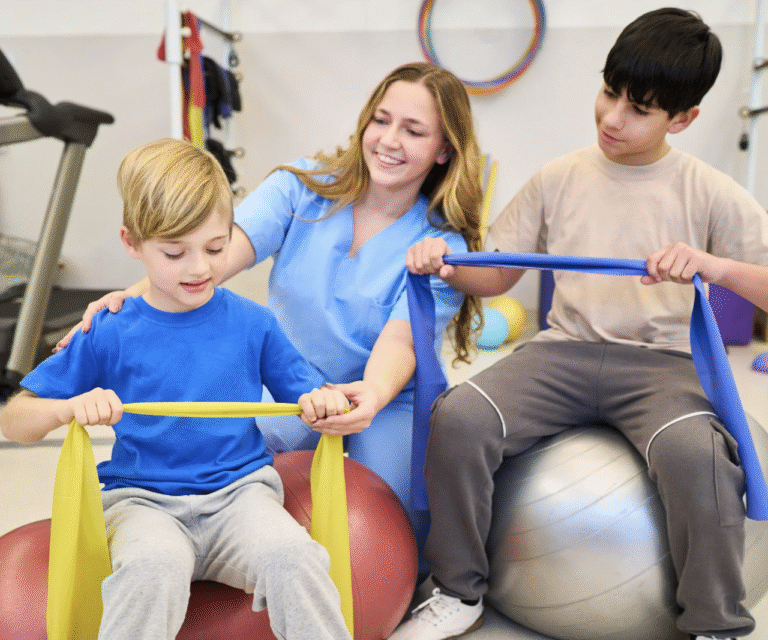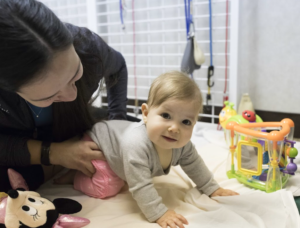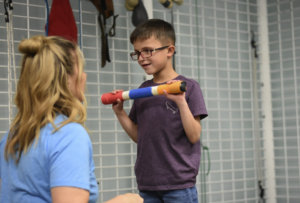Understanding Low Muscle Tone and Its Hidden Impact on Development
When parents think about autism, they often focus on social communication, sensory sensitivities, or behavioral differences. What’s not always as obvious—but equally important—is how physical development and muscle tone play a major role in how a child experiences the world.
Many children with Autism Spectrum Disorder (ASD) have underlying low muscle tone (hypotonia), motor coordination challenges, and postural instability that can affect everything from balance and endurance to handwriting and attention. These physical differences often go unnoticed because they’re subtle and not always immediately linked to autism—but they can have a significant impact on a child’s daily functioning and development.
What Is Low Muscle Tone?
Low muscle tone doesn’t mean weak muscles—it means the muscles are less “ready” to activate. Children with low tone may feel floppy when held as babies, tire easily during play, or prefer to sit or lean against furniture rather than maintain upright posture.
This can make it harder for them to:
- Sit still at a desk for long periods
- Run, jump, or climb with peers
- Maintain good posture while eating or writing
- Coordinate their movements smoothly
Over time, these challenges can affect how a child learns, interacts, and engages in both play and learning environments.
How Autism and Muscle Tone Are Connected
While not every child with autism has low tone, many share underlying neurological differences that impact how their brain communicates with their muscles. This can lead to challenges with:
- Motor planning: Understanding how to move the body in a coordinated way
- Balance and posture: Maintaining stability when standing, walking, or sitting
- Endurance: Sustaining energy throughout the day for learning and play
- Fine motor control: Managing small movements needed for dressing, feeding, or writing
Sometimes these motor challenges are mistaken for lack of interest or behavioral issues, when in reality, the child’s body may be working harder just to stay upright or complete simple movements.
How Physical Therapy Helps Children with Autism
Physical therapy (PT) helps address these challenges by strengthening the connection between the brain and body. Through play-based, movement-centered activities, therapists help children build core strength, coordination, balance, and motor confidence.
At Crawl Walk Jump Run Therapy Clinic, our pediatric physical therapists use neurologically based techniques to support movement and functional independence.
Some areas we focus on include:
- Core and postural strengthening: Improving trunk control to support sitting, standing, and walking
- Balance and coordination training: Using equipment like swings, balance boards, and obstacle courses to enhance stability
- Motor planning activities: Teaching the brain and body to work together for smooth, purposeful movement
- Sensory-motor integration: Helping children process sensory input through movement to improve body awareness and calm regulation
These sessions are customized to each child’s abilities and sensory preferences, turning therapy into a fun and empowering experience rather than a chore.
Why Early Intervention Matters
The earlier physical therapy begins, the better the outcomes. Early PT intervention helps build the foundation for lifelong skills like walking, running, sitting upright, and maintaining attention. It also supports participation in school, play, and daily routines—key areas where children with autism may struggle.
If left unaddressed, low tone and poor motor control can lead to:
- Delays in gross and fine motor milestones
- Fatigue and frustration during physical or classroom tasks
- Difficulty participating in social play or sports
- Compensatory movement patterns that can cause future pain or weakness
Early, consistent physical therapy can prevent these challenges from compounding over time and help your child gain the confidence to move—and live—more independently.
How Crawl Walk Jump Run Can Help
At Crawl Walk Jump Run Therapy Clinic, we specialize in neurologically based pediatric therapy for children with autism and other developmental differences. Our physical therapists collaborate closely with occupational and speech therapists to provide a holistic treatment plan that supports your child’s entire body and brain.
We believe that movement is the foundation for learning, communication, and emotional regulation—and every step, jump, and stretch in therapy brings your child closer to their full potential. If you suspect your child may have low muscle tone or motor delays, we invite you to schedule a free consultation with one of our expert therapists. Together, we can help your child gain strength, confidence, and independence—one movement at a time.




